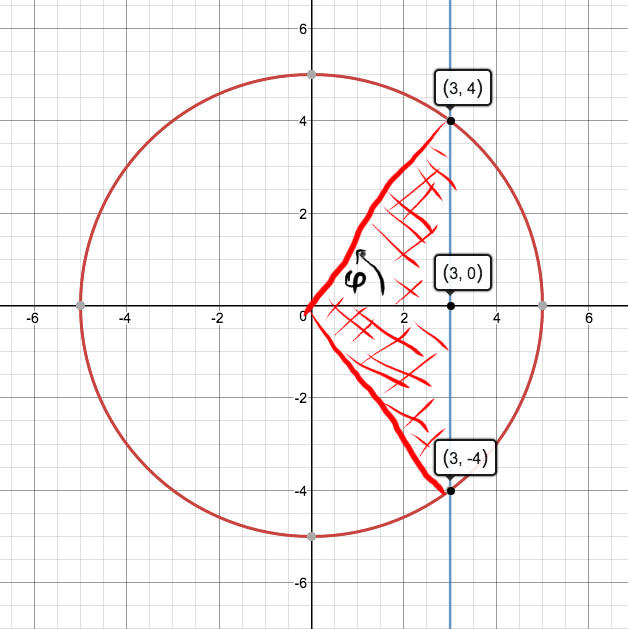How do you write the definite integral to find the smaller area cut from the circle #x^2 + y^2 = 25# by the line x = 3?
2 Answers
The definite integral is
Explanation:
There are always multiple ways to approach integration problems, but this is how I solved this one:
We know that the equation for our circle is:
This means that for any
If we imagine that a line drawn from the top of the circle to the bottom with constant
Since we are interested in the area between the line
As an alternative, in polar
Explanation:
you can do it in polar too
the circle in polar is r = 5 and using the simplest formulation of area
where the red bit is as shown shaded in red on the drawing



